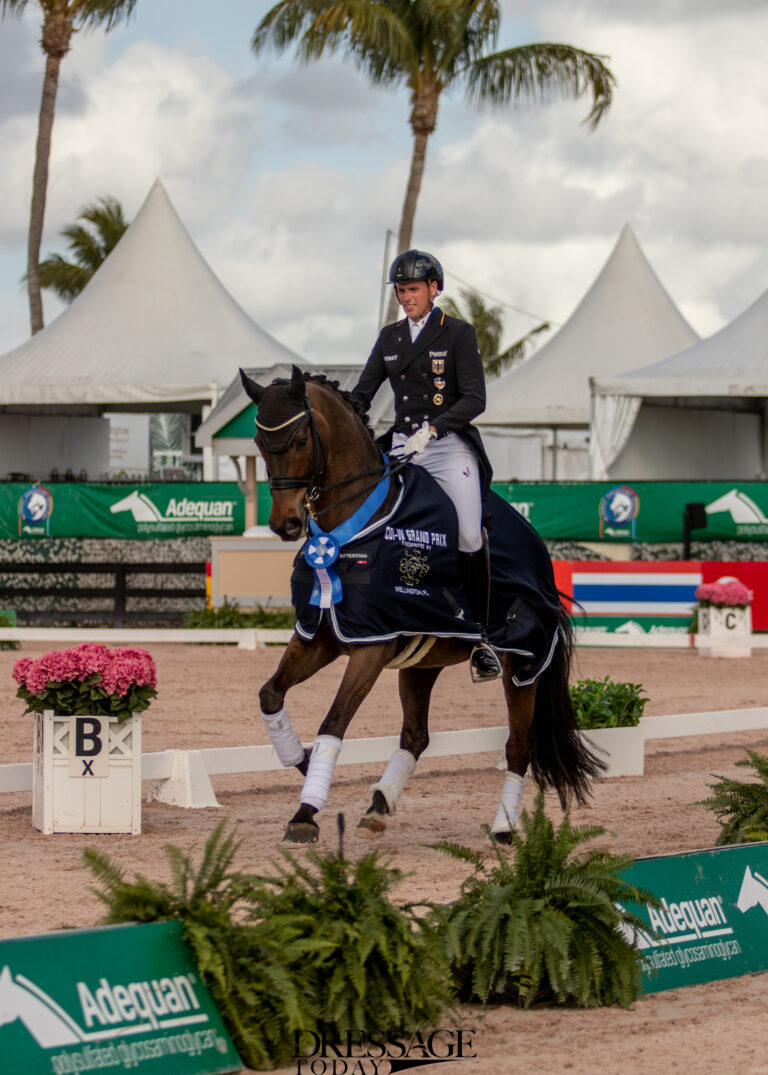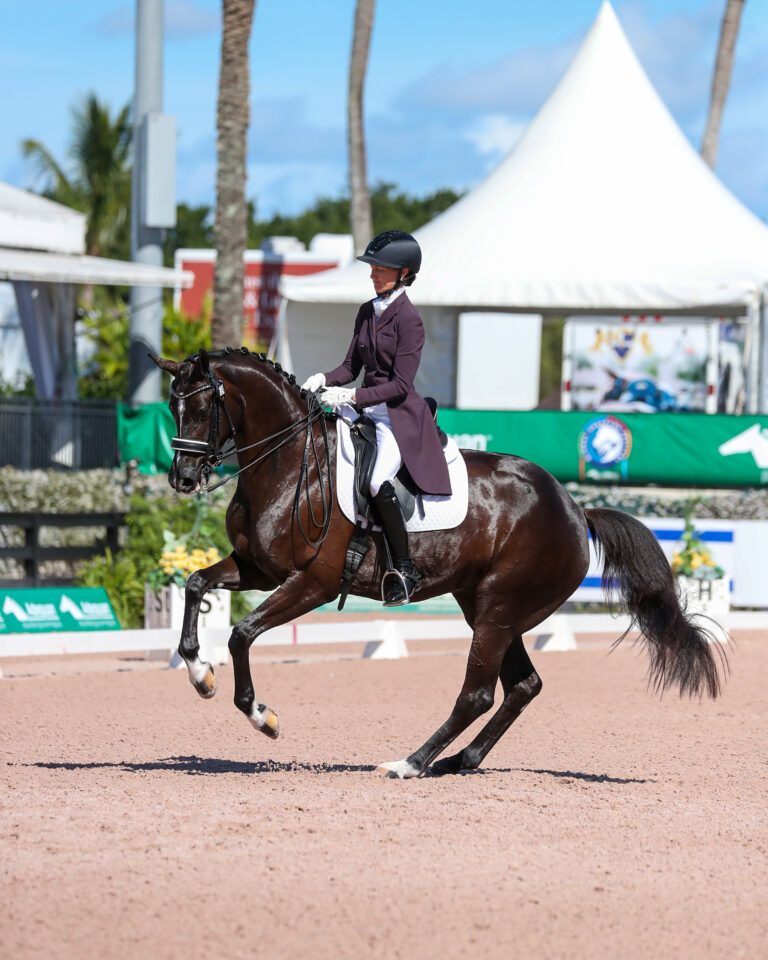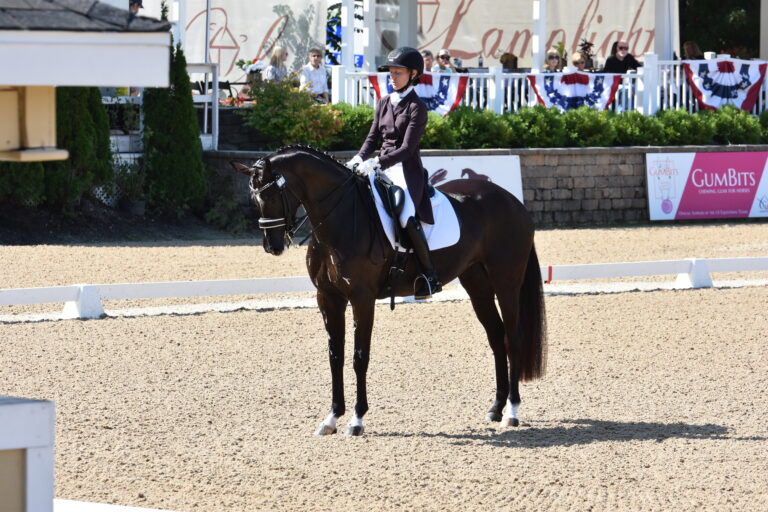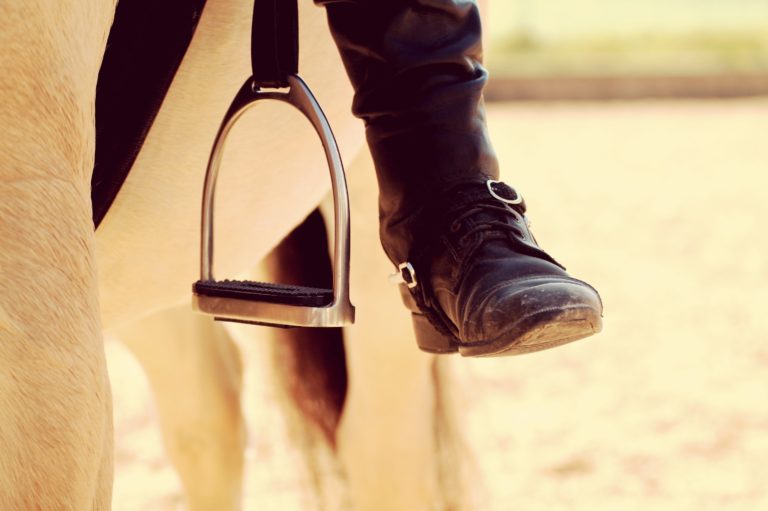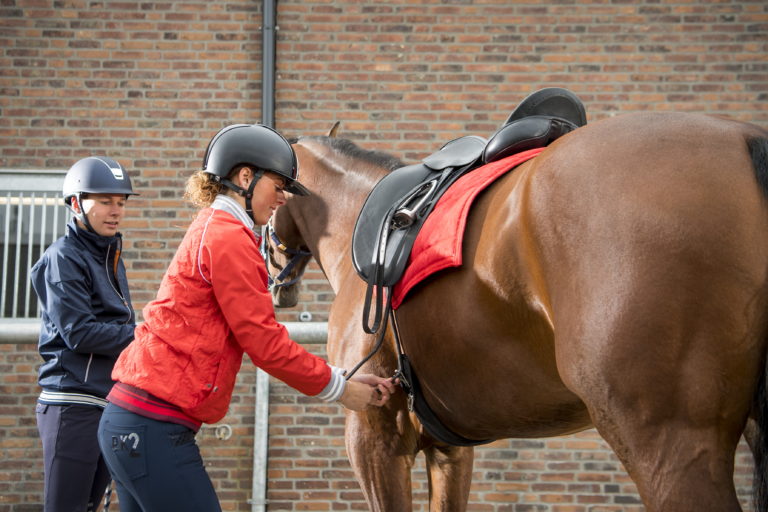In this series, top trainers tell how they were temporarily stumped at some point in their careers. These tales are fascinating because most of us see only the finished product at a show or on a video and assume the training must have gone smoothly. Certainly, the best riders make it look that way. The manner in which the toughest training challenge is resolved is a lesson in persistence, patience and good horsemanship.
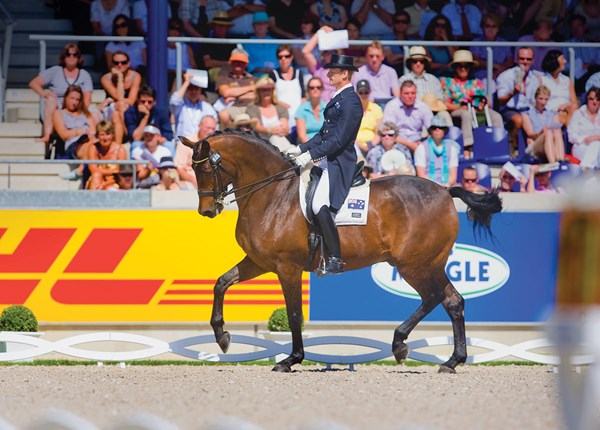
I had some pretty tough horses that were my bread and butter in the early years. Dressage ladies in distress would call me and ask for help with their horses. I saw some unsuitable horses for dressage that you don’t see much anymore. In my first year as a dressage rider, I got bucked off more times than I did in my last year as a professional rodeo rider. That happened, as you can imagine, when a young guy coming into dressage got on a young, athletic, well-fed warmblood in a dressage saddle. There’s definitely a risk involved in dressage.
Despite that sometimes-rough beginning, my toughest training challenge has been getting Victory Salute to move in such a way that he is competitive internationally. His normal gaits are quite modest, and it hasn’t been easy for him to learn how to move at full capacity with energy and suppleness.
“Sam,” as the 18-hand bay gelding is affectionately known, was in training with Matthew Dowsley and had competed a few times at Prix St. Georges before I got him. In late 2005, Ulla Salzgeber was the Australian coach, and had spoken to me about Sam and how she thought he would suit me for the long-term goal of representing Australia in international competition. As chance would have it, Matthew relinquished the ride on Sam due to other commitments, and the owner, Carolyn Lieutenant, contacted me to see if I was interested. That was in February 2006, and I was staying with Ulla in Germany, working and riding. After the call, I spoke with Ulla and we discussed what we liked about Sam and where we needed to make improvements. She advised that I try him for six months and keep her informed.
Before I got Sam, he had done a little piaffe and passage. He made up for not having big movement with his great character and an abnormal ability to bend all of his joints down through his hind legs, which allowed him to take weight behind for the collected work. He is a sweet horse with a real conscience for trying to get things right. Sure, he is like all horses and only does what he has to, but by and large, he is a good worker with an ability to accept the pressures of Grand Prix training.
Bred in Australia by his owner, Sam is a Dutch Warmblood cross by Salute, who was imported by Heath and Rozzie Ryan. (Salute is by the Holsteiner stallion Saluut.) On the bottom side, Sam’s dam is a French Anglo-Arabian with a splash of Percheron. We often have a giggle about his breeding, but in actual fact, he represents the evolution of modern warmblood dressage breeding, which has been conducted over the past 80 years.
Sam is big, and I love the look of a big, athletic horse in the dressage arena. They tend to fill the eye and give that majestic, war-horse appearance, reminding us of the origins of dressage. What makes training these big horses such a challenge is that each one comes with his own set of complications, and an underlying weakness is generally the root of most problems.
When Sam was 4, 5 and 6, he was a big horse with no muscle or strength, and from what I am told, he used to resist a lot. When I got him at age 9, he wasn’t using his body at full capacity, and you could see that whilst he had strength to carry behind, he couldn’t push himself upward and forward at the same time. So his tempo would always be changing. It has taken a good five years to get him in gear and moving the way he does today. During this process, we also had to be cautious not to overdo the intensity of the work for fear of injury. Big horses can easily break down if you compromise their natural way of moving, so it’s important that you have a realistic expectation of your horse together with a long-term outlook.
So how did I do it? There’s no magic trick. It is good basic training. It really comes down to suppleness, straightness, impulsion and time. Good work, good riding. I’ve had good coaches—Ulla Salzgeber, Hubertus Schmidt and Edward Gal in Europe. Then when I came back to Australia, I just did consistent basic training. Whilst Ulla, Hubertus and Edward all train using different systems, the underlying principles are the same: Get the horses to react instantly to your aids, whilst putting them in positions in their neck and body which invite them to come through, i.e., move through their body without resistance, working from behind in a forward way, allowing you to balance them back over the hind legs within the pace.
One thing I did virtually from the start with Sam (and that I still do all the time) is a lot of transitions within the paces. Since lack of strength is a common problem with big horses, it helps to go forward and back and collect the forward pace, making sure that you have the horse straight and supple enough to then take weight over the hind legs.
Sometimes I will do a 10-meter circle, then bring Sam back to a pirouette canter, for example, and then go forward again to get him to use himself behind. I like to ride variations of everything I do, whether it is a shoulder-in, piaffe/ passage or pirouette. I like to first execute the movement and then train all its possible variations, such as forward and back, quicker and slower tempo, neck down/neck up, flexion and bend right then left, more angle/less angle and so on. The more variations I can train with him, the more adjustable Sam becomes, and that is what allows things to look smooth and easy. You need to have all possible scenarios rehearsed and understood by the horse so that when you compete, you can make small adjustments to keep things looking rhythmical and foot-perfect as though you have all the time in the world.
One important point to note in riding variations within training exercises is that the rider should make sure the horse’s balance is always maintained. By losing balance, you end up creating more resistance, which defeats the purpose of the exercise. To ensure that you don’t push or pull your horse off balance, you must have a great awareness of what is happening underneath you, the horse’s gaits and the lines you are riding. I tend to give my riders the visual that they are riding on a tightrope and they must do whatever they can to stay on it. If you can ride with such awareness and create adjustability within the technique of the exercise, then you are starting to ride with foot-perfect control, which is what top sport dressage is all about.
One of the best things about Sam, conformation-wise, has been that he has a short back for such a big horse. He takes an 82-inch rug, not big for such a big horse. It’s that short back together with the ability to bend his hind legs that helped most in the collection.
Since the work has progressed and Sam has become more established in the Grand Prix work, his character has changed. On the ground, he could be quite a tiger in the stable, but now he’s the most lovable and affectionate horse. I put it down to his being more confident in his work and having the strength to do it. In the training phase of producing a Grand Prix horse, there are always times of confusion for him. It’s only my own theory, but now as the confusion is gone, as Sam is now Grand Prix finished and spends most of his time doing simple basics, he has become far happier in himself. He is a much more relaxed character at 14 than at 9.
I strongly suggest that if you have a large horse, give him until he is 8 years old to show you the glimpses of what he can do. By that I don’t mean leave him be until he is 8, but reserve judgment on quitting on him until then. Keep training the same way as you would any other horse, but know that he will make more mistakes and give you more trouble as he struggles to give you what you want. Add an extra year or 18 months to your program to allow the time for development and you, too, may be as happy as I have been with my big boy, Victory Salute.
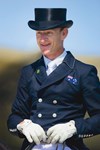
Brett Parbery rode Victory Salute at the 2010 WEG in Kentucky, finishing 9th in the Freestyle and Grand Prix Special. A former top rodeo rider, he has won nine Australian dressage championships and is is Australia’s highest FEI-ranked dressage rider. He and his wife, Melinda, teach and train at Cedar Lodge in Penrose, New South Wales, Australia (brettparbery.com.au).


